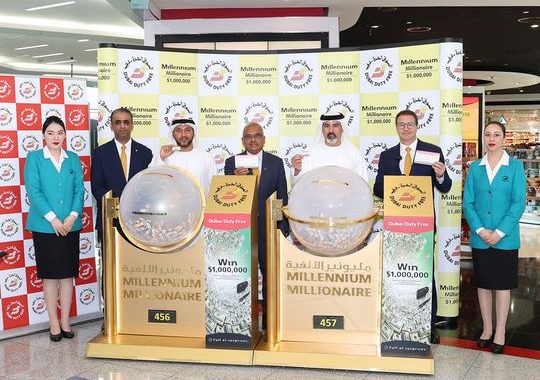Video: UAE’s Rashid Rover ready for next critical stage of Moon landing

Image Credit: Ahmed Ramzan
Dubai: Engineers at the Mohammed Bin Rashid Space Centre (MBRSC) are now preparing for the next ‘critical stages’ of the first Emirates Lunar Mission (ELM), following the successful launch of the UAE-made Rashid Rover on December 11.
The Moon-bound rover is safely stored at a special compartment of the Japanese lunar lander Hakuto-R that is currently 500,000 kilometres away from Earth, 10 days after it was sent to space on a SpaceX Falcon 9 rocket from Cape Canaveral Space Force Station in Florida, USA.
All telemetry data received daily by the mission control centre at MBRSC indicate that the compact lunar rover is in good health, Dr. Hamad Al Marzooqi, ELM project manager, shared in an exclusive interview with Gulf News.
“That is a very good sign in our mission,” noted Al Marzooqi, adding: “There will be some critical points in the coming weeks — we are looking forward to them and we will keep everyone posted once we reach those points.”

Image Credit: Ahmed Ramzan
Orbital control manoeuvres
The critical stages include orbital control manoeuvres that will be conducted by Hakuto-R during its cruise period. The Japanese-made lunar lander carrying Rashid Rover and other payload to the Moon is taking a circuitous but economic route. It is expected to land on the Moon’s southeastern outer edge of Mare Frigoris (Sea of Cold) in April next year.
Al Marzooqi explained why Hakuto-R is not taking the shortest path to the Moon. He said: “You can reach the Moon within six days after launch as were done by Apollo missions in the 1960s and 70s. But the approach taken by the lander is a low-cost trajectory to reduce the amount of fuel needed to reach the Moon.”
Instead of fuel, Hakuto-R will use the gravity of the Earth, Moon, and Sun to reach the lunar orbit. This means, the lander will first cruise — using less fuel — beyond the Moon’s orbit which is about 1.4 million kilometres away from Earth and from that far distance, Hakuto-R will do a deep space manoeuvre, turn around, and start the trajectory to insert itself into the lunar orbit.
Communication challenge
Al Marzooqi noted communication with Hakuto-R will be slow during deep space manoeuvre as the lander will be from the farthest point away from Earth.
“Currently, Rashid Rover on-board Hakuto-R is 500,000 kilometres away from Earth and we will reach the farthest point at 1.4 million kilometres away in the next couple of weeks,” he added.

Image Credit: Ahmed Ramzan
Lunar orbit insertion
The next critical stage will be the lunar orbit insertion (LOI). Using the gravity of the Moon, the Japanese-made lander will first orbit the Moon for about two weeks (according to ispace, maker of Hakuto-R) and each circle will take it closer to the surface with an increasingly elliptical trajectory before angling itself vertically to softly land on its surface and perform a fully-automated landing.
Most critical part
This landing would be the most critical part of the lunar mission, with several missions having failed before, including that of India and Israel.
“Only few countries have achieved it (lunar landing) successfully,” noted Al Marzooqi, adding: “Once landing is done by Hakuto-R, we will start to execute the next milestone which is to deploy the rover.”
‘The big moment’
Al Marzooqi said: “Rashid Rover is secured inside the lander by a robotic arm. Once Hakuto-R safely lands, the rover will be released and we can start our operation where we will deploy the mast and antenna of the rover.”
“Following check-up and calibration of all instruments and ensuring that all systems are working properly, the ‘big moment’ will happen when Rashid Rover will touch the lunar surface and we can declare that the UAE has stepped on the moon for the first time.”
Science mission
Rashid Rover — named after the late Sheikh Rashid bin Saeed Al Maktoum, builder of modern Dubai — will study the Moon’s surroundings for one lunar day, which is equivalent to 14.75 days on Earth. The rover will collect data and send them back to the ground station at MBRSC in Dubai.
“The whole science mission will last for one lunar day or 14.75 Earth days. We will run 24/7-type of operation, with three shifts taking daily rounds controlling, operating and analysing the data gathered by Rashid Rover,” noted Al Marzooqi.
Rashid Rover will go into a hibernation or sleep mode during the lunar night, when Moon’s temperature drops to as low as minus 180 degrees Celsius. When the sun rises again on the lunar surface (after 14 Earth nights), the team at MBRSC will try to “wake up” Rashid Rover to see if its systems were able to survive the low temperatures and be ready to function for a second lunar day.
“Rashid Rover will complete its mission in one lunar day but it will be another great achievement, beyond our objective, if we extend it for one more lunar day,” Al Marzooqi added.
Rashid Rover has four cameras, including two main cameras — a microscopic and a thermal imaging camera — in addition to sensors and systems equipped to characterise the soil, dust, radioactive and electrical activities, and rocks on the Moon’s surface. The four-wheeled rover will perform numerous scientific experiments to measure the effectiveness of some materials on the lunar surface, such as the efficiency of adhesion of the rover wheels to the lunar surface, and explore the process of overcoming natural obstacles on the Moon.”




